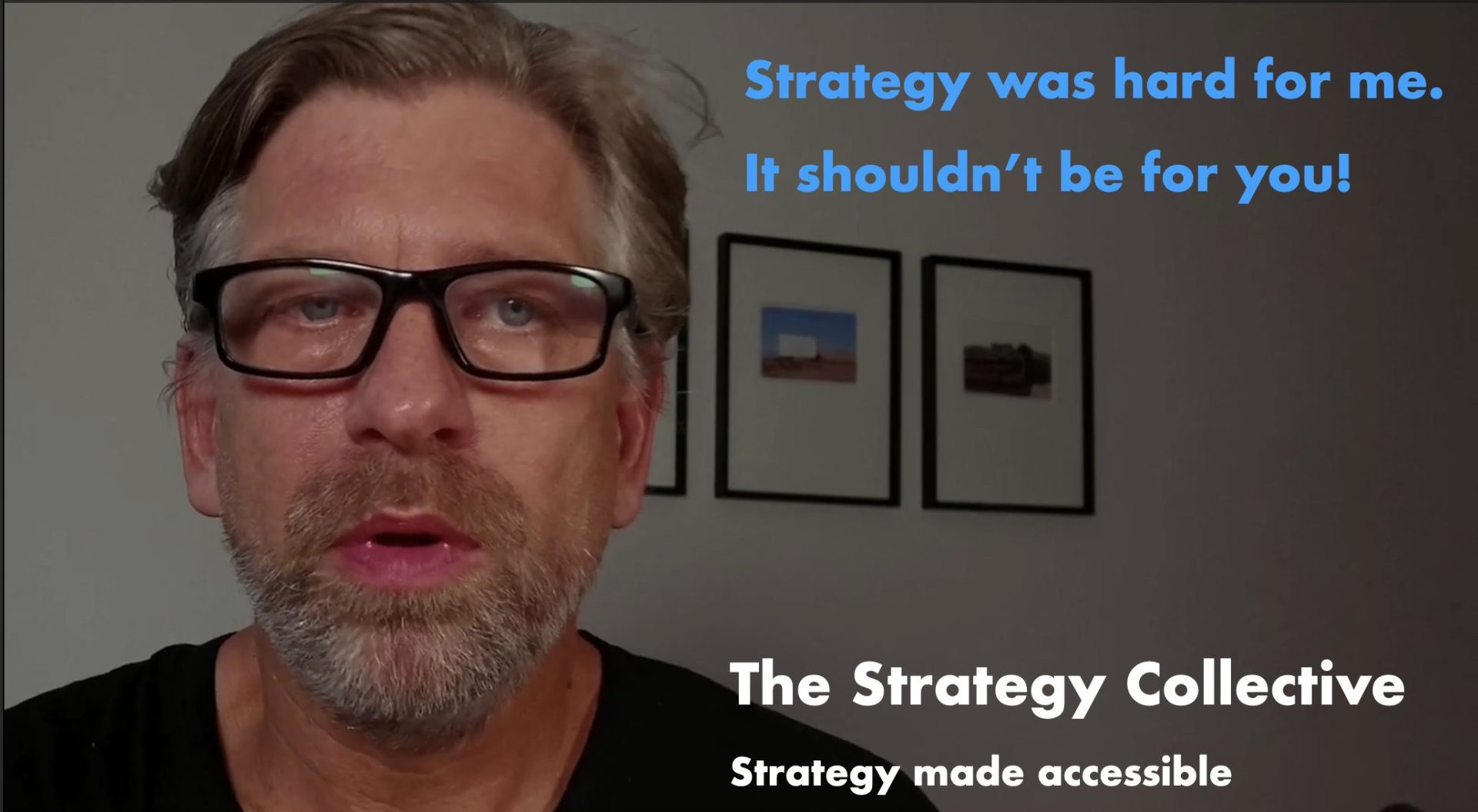Getting Your Hands On Strategy Work

Getting My Hands on Strategy Has Been One of My Hardest Things – It Shouldn’t Be For You
Have you ever struggled to get involved in strategy work? I know I have. Getting my hands on strategy was one of the hardest things in my life, but it shouldn’t be that way for you. It should be way easier. I guess the main reason for strategy having such restricted access is simply its huge impact – being good or bad at strategy as a company can make you win or lose, being clear or unclear. And traditionally, it lives in a culture with high barriers of entry. That leads to strategy being mythical, sacred, and finally super hermetic.
From the very start of my over 30-year career, I noticed something was off whenever I encountered a strategy – or the lack thereof. I often found myself in meetings where strategies were either non-existent, not communicated well, or just reactive and finally off from my reality and how I would have done it. But what was even more frustrating was that I rarely had the opportunity to contribute to these strategies. I felt trapped, and like my potential was being wasted. But worse: I did not know where to start to change this to get a handle on things and progress.
Surrender Was No Option – My Way Forward
I don’t know about you, but my thoughts were that I do have an urge to contribute in some way and that I am smart enough. In situations like these, being stuck just feels awful and I always think about how I will feel in 20 years about not having tried. I simply did not want to “die” without access to contributing to strategy, feeling sidelined, and unable to influence key decisions. I needed a space for my ideas to be heard; my potential should not be wasted. I just couldn’t go out like this.
But, in the end, I was never invited to lead or change the way strategy was done. It was on me to change this. So, here is what I did:
- Understand the Basics: I read foundational books on strategy by authors like Porter, Roger Martin, and Mintzberg. These provide the theoretical background that is crucial.
- Condense the Learning to Avoid What I Had Seen: I made sure that the strategy was not a rigid plan but an emergent one, embedded in the everyday life of the company. I learned how to set up structures that implement this.
- Expose Myself: That’s actually where it got tough. I actively looked for environments where I could learn and make mistakes without severe consequences. I sought workshops, courses, and communities focused on strategy. I went as far as facilitating workshops with former McKinsey and Boston Consulting employees, simply to observe how they work and dig their culture. Mainly to avoid lots of the tactics they are using.
Steps 1 and 2 are relatively easy, but getting your hands on an environment that lets you act most of the time proves to be super tough.
Knowledge Is Not Enough – Exposing Yourself To Practice
But here is the main twist – just knowing any of this isn’t enough. You need to be able to work and exercise this stuff. At least for me, there was no education around strategy when I needed it, no place where I could learn in a failsafe environment. I had to fight for every bit of access and knowledge in that gate-kept world.
But there are actually no reasons that these barriers have to exist or for them to be so high. And that is actually why I had the urge to create something like The Strategy Collective. I wanted to provide a solution for people like you and me – people who are eager to contribute and make a difference but need the right guidance and opportunities and a safe space to learn, grow, and practice.
Here’s what The Strategy Collective offers:
- Curated Content: We provide relevant, curated content from top strategy experts, so you don’t have to navigate through the overwhelming amount of information out there.
- Weekly Video Calls: Dive deeper into material with interactive video calls where we discuss and dissect key concepts and exercise exactly where needed.
- Hands-on Exercises: Apply what you learn with practical assignments and get personalized feedback, helping you grow in a failsafe environment.
- Community Support: Join a learning community where you can share insights, ask questions, and learn from the experiences of others.
Why Community Is a Key Aspect in Learning
Most questions I get are on the community aspect. And while I do not want to downplay the great content in the program, I cannot stress the community aspect enough. My metaphor is “riding with a group of really great skiers or snowboarders” where just by watching and following, you learn a lot. You simply get better by being immersed in a group of fellow interested learners.
If you like to work in this field, I want you to have easy access. And I want nearly every company to be great at strategy and work on it with the contribution of their own employees who know the ins and outs and options and limitations of it best.
For this, strategy shouldn’t be your hardest thing to get started. With the right guidance and embedded in a community, you can progress much faster than I ever could. Take the next step: join The Strategy Collective and transform your approach to strategy.
Visit the Strategy Collective website and see how The Strategy Collective can help you get started or grow your strategic approach. I would expect questions, so don’t hesitate to contact me!